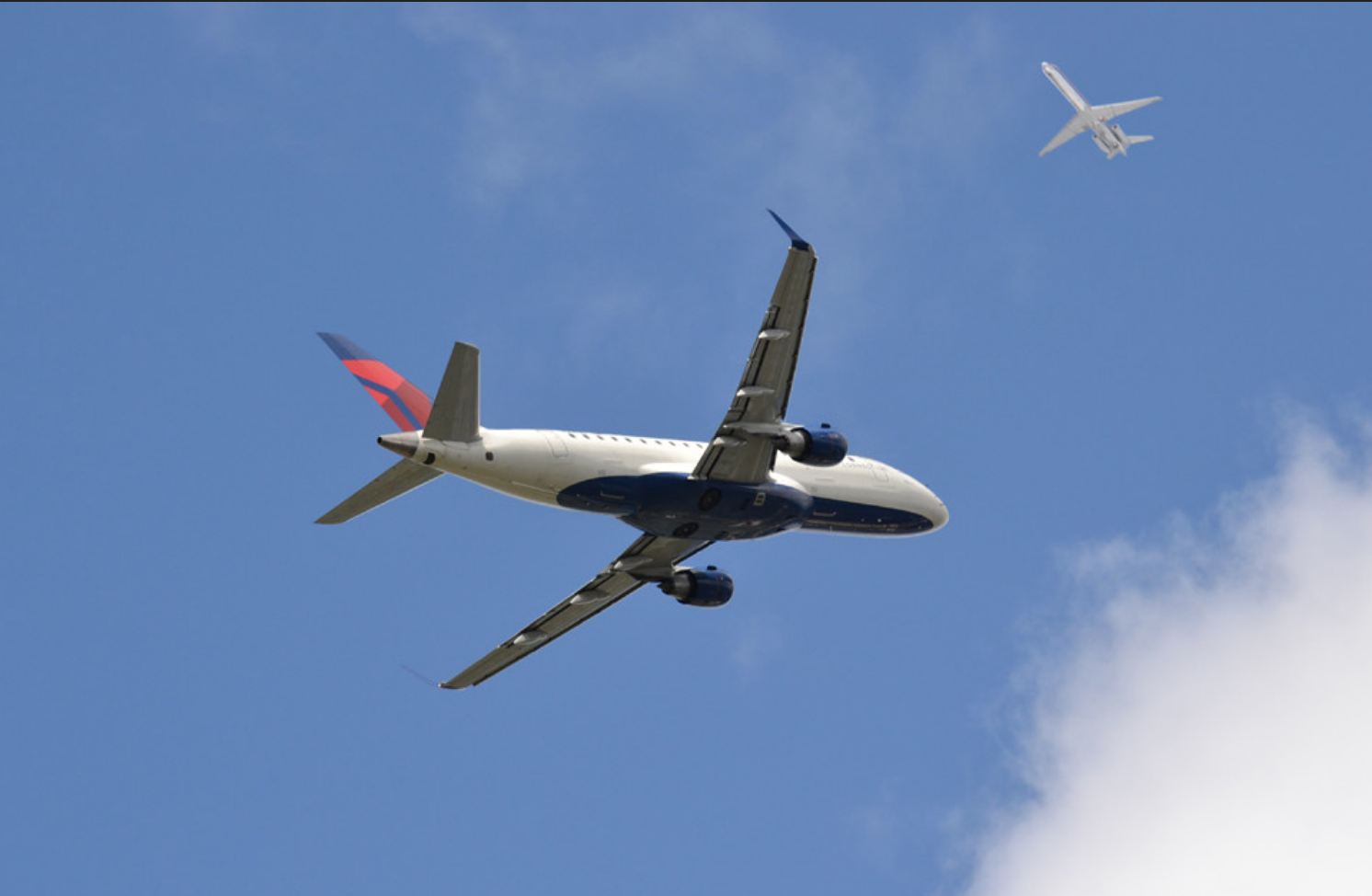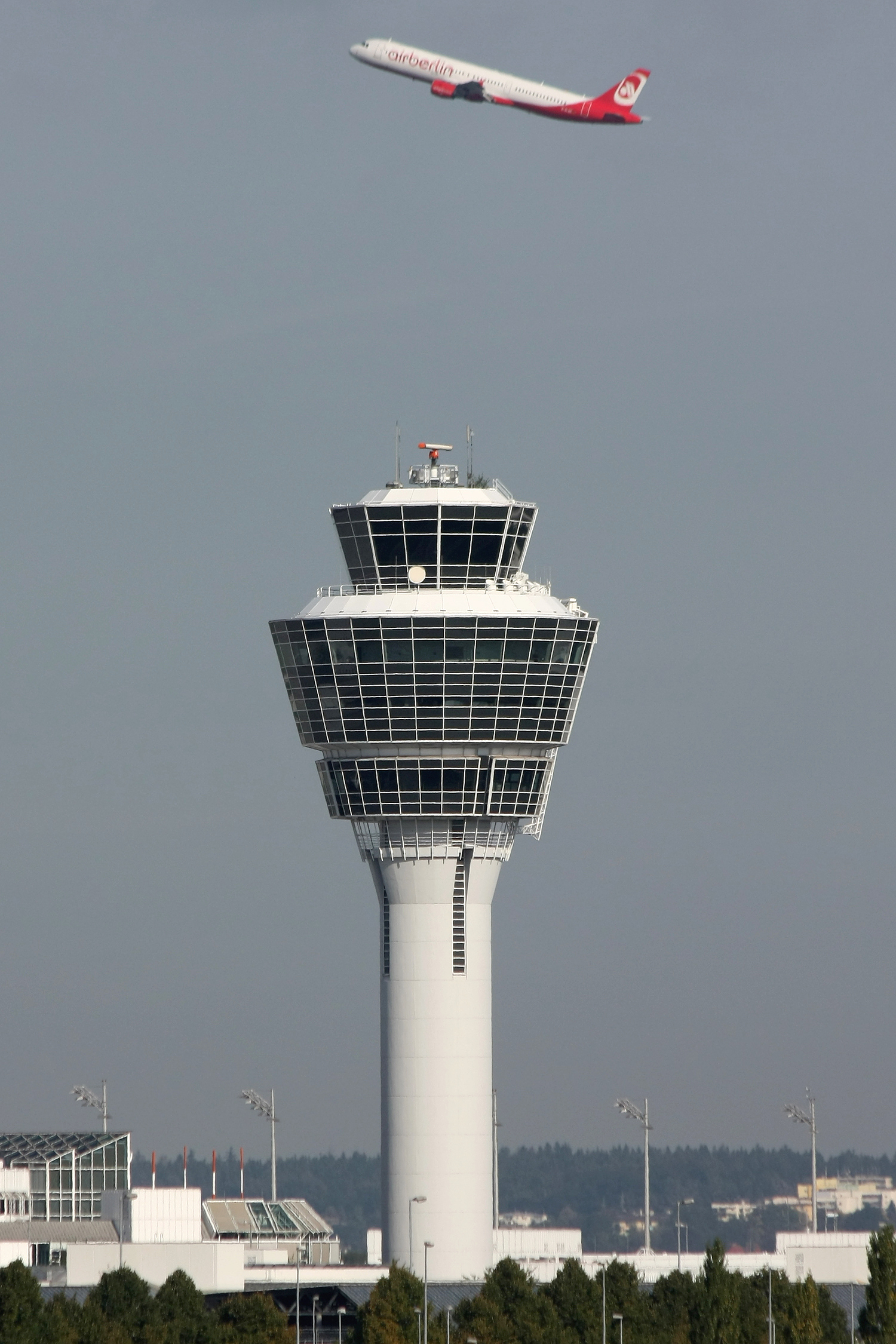Lesson 17
Apply Rounding
Warm-up: Notice and Wonder: Plane Altitudes (10 minutes)
Narrative
This warm-up prompts students to make sense of a problem before solving it, by familiarizing themselves with a context and the mathematics that might be involved. This warm-up gives students a chance to analyze and ask questions about the set of data they will use in a later activity.
Launch
- Groups of 2
- Display the image.
- “What do you notice? What do you wonder?”
- 1 minute: quiet think time
Activity
- “Discuss your thinking with your partner.”
- 1 minute: partner discussion
- Share and record responses.
Student Facing
| plane | altitude (feet) |
|---|---|
| WN11 | 35,625 |
| SK51 | 28,999 |
| VT35 | 15,450 |
| BQ64 | 36,000 |
| AL16 | 31,000 |
| AB25 | 35,175 |
| CL48 | 16,600 |
| WN90 | 30,775 |
| NM44 | 30,245 |
Student Response
For access, consult one of our IM Certified Partners.
Activity Synthesis
- Explain that altitude is the distance of an object from sea level. Most commercial planes that carry passengers fly at an altitude between 33,000 and 41,000 feet. An altitude of 35,000 feet (7 miles) is typical. Lighter airplanes tend to fly at lower altitudes, around 10,000 feet.
- “Which of these airplanes might be smaller aircrafts? Which might be larger passenger planes?”
Activity 1: Apart in the Air (20 minutes)
Narrative
In this activity, students make sense of a situation and decide how to round the quantities in it. They see that their interpretation of the problems and their rounding decisions affect their solutions to the problems. When students describe how they see their rounded quantities in relation to the context, they are thinking abstractly and quantitatively (MP2).
For instance, when answering the first question, students may say that the altitudes of several planes (SK51, AB25, and WN90) are not “about 30,000 feet” because when rounded to the nearest thousand, they round to different numbers. They may consider them differently when they are rounded to the nearest ten-thousand.
The second question prompts students to start considering the implications of using rounded values to solve problems. At this point, it is not necessary for students to clearly articulate why Mai’s suggestion of using rounded altitudes is not reliable for keeping a safe distance between planes. In the next activity, students will look more closely at the implications of rounding in the same context.
Launch
- Groups of 2–4
- “Have you wondered how many planes are in the air at any given time? What would be your estimate?”
- 30 seconds: Share estimate with a partner.
- Share and record responses.
- “One data source reported that, in 2017, the number of planes that are in the sky at the same time ranged from about 3,300 (when it is the least busy) to over 12,000 (at peak times)!”
- “With that many planes in flight at once, it is extremely important for planes to keep a safe distance from one another, especially around busy airports.”
Activity
- “Work with your group to complete the activity.”
- 8–10 minutes: group work time
- Monitor for the different ways students decide whether a number is “about 30,000” and test the validity of Mai’s strategy.
Student Facing
-
Altitude is the vertical distance from sea level. Here are the altitudes of ten planes.
plane altitude (feet) WN11 35,625 SK51 28,999 VT35 15,450 BQ64 36,000 AL16 31,000 AB25 35,175 CL48 16,600 WN90 30,775 NM44 30,245 
Which planes are flying at about 30,000 feet? Explain or show your reasoning.
-
Planes flying over the same area need to stay at least 1,000 feet apart in altitude.
Mai said that one way to tell if planes are too close is to round each plane's altitude to the nearest thousand. Do you agree that this is a reliable strategy?
In the last column, round each altitude to the nearest thousand. Use the rounded values to explain why or why not.
Student Response
For access, consult one of our IM Certified Partners.
Advancing Student Thinking
Activity Synthesis
- Invite students to share their responses to the first question. Discuss reasons for any disparity in students’ lists.
- “How did you decide which numbers to include in your list of ‘about 30,000 feet’ and which to exclude?” (Sample responses:
- Rounded all numbers to the nearest 10,000.
- Excluded numbers less than 20,000 and more than 35,000, and then rounded numbers in the rest to the nearest 1,000.)
- Point out that students may answer the question differently depending on how they round the numbers.
- “Who can give an example that shows that Mai’s strategy works? How about one that shows it doesn’t work?”
Activity 2: Safe or Unsafe? (15 minutes)
Narrative
In this activity, students continue to consider rounding in the same context as in the first activity. Students think about why rounding the altitudes to the nearest 1,000 may make it appear that two planes are a safe distance apart while the exact altitudes may show otherwise.
As they consider different ways and consequences of rounding in this situation, students practice reasoning quantitatively and abstractly (MP2) and engage in aspects of mathematical modeling (MP4).
Advances: Representing, Conversing
Supports accessibility for: Conceptual Processing, Memory, Social-Emotional Functioning
Launch
- Groups of 2–4
- “How do you think pilots know whether their plane is too close to another plane while in the air?”
- 30 seconds: quiet think time
- Share and record responses.
- Explain air traffic controllers are a group of people whose job is to monitor air traffic, including to track the positions of all the planes and the distances between them.
- Consider showing an image of an air traffic control room and controllers.
Activity
- “Take a few quiet minutes to work on the first three problems. Then, share your responses with your group and work on the last problem together.”
- 5 minutes: independent work time
- 5 minutes: group work time
Student Facing
Use the altitude data table from earlier for the following problems.
-
Look at the column showing exact altitudes.
- Find two or more numbers that are within 1,000 feet of one another. Mark them with a circle or a color.
- Find another set of numbers that are within 1,000 feet of one another. Mark them with a square or a different color.
- Based on what you just did, which planes are too close to one another?

-
Repeat what you just did with the rounded numbers in the last column. If we look there, which planes are too close to one another?
- Which set of altitude data should air traffic controllers use to keep airplanes safe while in the air? Explain your reasoning.
- Are there better ways to round these altitudes, or should we not round at all? Explain or show your reasoning.
Student Response
For access, consult one of our IM Certified Partners.
Activity Synthesis
- Select a previously identified student to share their symbol- or color-coded table, or display the table in the Student Responses.
- Invite the class to share their responses to the question of which set of data air traffic controllers should use.
- Discuss students’ ideas on whether there were better ways to round the altitudes or to round at all.
- Explain that air traffic controllers in fact rely on technology and computers to calculate exact distances between planes.
Activity 3: No-phone Zone? [OPTIONAL] (15 minutes)
Narrative
Launch
- Groups of 2–4
- Explain to students that, in the United States, air passengers are not permitted to use their cell phones from take-off until landing because phone signals can interfere with flight communication signals. However, this hasn't always been true. There had been a time when phone use was allowed after the plane reached a certain altitude. Some countries still allow phone use based on the altitude of the plane.
- Display the table.
- “What do you notice? What do you wonder?”
- 30 seconds: quiet think time
- 1 minute: partner discussion
Activity
- “Take a few quiet minutes to work on the task. Then, share your thinking with your group.”
- 5–7 minutes: independent work time
- 5 minutes: group discussion
- Monitor for students who agree with different characters because they round the altitudes to different place value units.
Student Facing
In some countries, cell phone use is allowed on a flight only when the plane is at a certain altitude, usually around 40,000 feet.
Here are six planes and their altitudes.
| plane | altitude (feet) |
|---|---|
| A | 40,990 |
| B | 39,524 |
| C | 36,138 |
| D | 40,201 |
| E | 35,472 |
| F | 30,956 |
Jada says the passengers in all planes except for plane F can use their phones.
Elena says only those in B and D can do so.
Do you agree with either of them? Explain your reasoning.
Student Response
For access, consult one of our IM Certified Partners.
Activity Synthesis
- Select previously identified students to share their responses and reasoning.
Lesson Synthesis
Lesson Synthesis
“Today we used rounding to make sense of situations and solve problems. We saw that in real-life situations, different ways of rounding may lead us to different conclusions, and some ways of rounding may be more useful than others.”
Display the table showing airplane altitudes.
“We learned that rounding to the nearest 1,000 was not the best idea for determining if planes are a safe distance apart. When might it be helpful to round numbers like these altitudes, then?” (Sample response: When we want to know approximately where the planes are, which ones are the highest and the lowest in the air, or which planes are higher than another plane.)
“In what situations have you rounded multi-digit numbers to make it easier to do or understand something? Could you give some examples of how you might round the numbers?” (Describing the number of people at an event like in a baseball stadium.)
Cool-down: Spatial Distancing (5 minutes)
Cool-Down
For access, consult one of our IM Certified Partners.
Student Section Summary
Student Facing
In this section, we learned to compare, order, and round numbers up to 1,000,000.
We started by using what we know about place value to compare large whole numbers. For instance, we know that 45,892 is less than 407,892 because the 4 in 45,892 represents four ten-thousands and the 4 in 407,892 represents four hundred-thousands.
Next, we found multiples of 1,000, 10,000, and 100,000 that are closest to given numbers—at first with the help of number lines, and later without. For example, for 407,892, we know that:
- 408,000 is the nearest multiple of 1,000
- 410,000 is the nearest multiple of 10,000
- 400,000 is the nearest multiple of 100,000
Finally, we used what we know about finding nearest multiples to round large numbers to the nearest thousand, ten-thousand, and hundred-thousand.